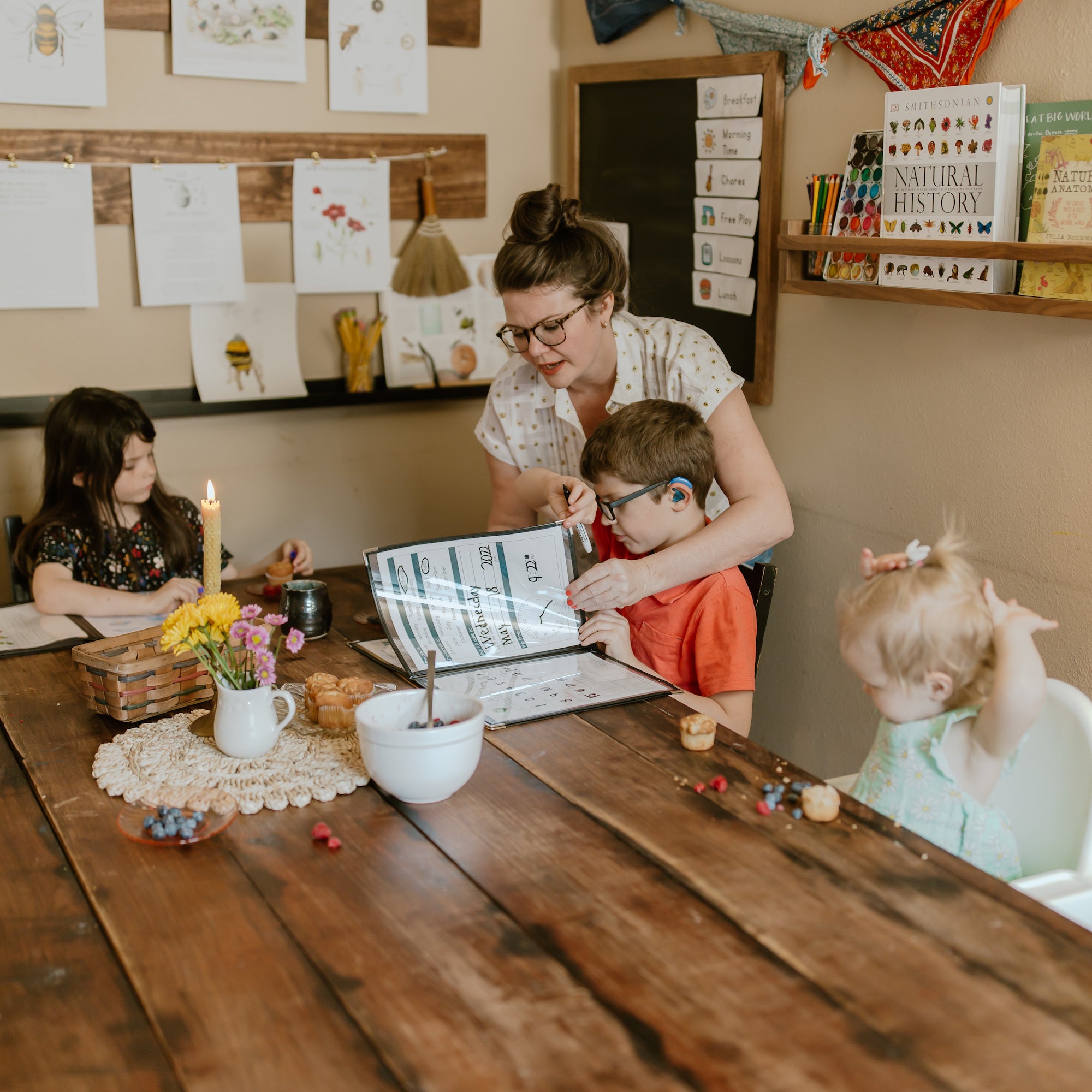Early on in our homeschool journey, I dove deep into learning about educational philosophies. While I don’t subscribe to only one method in our home, I most closely resonate with the Charlotte Mason philosophy. One thing I found in my research was that Charlotte Mason stressed the importance of exposing children, even young children, to fine art. Coming from a traditional educational background myself, this idea was foreign to me.
Charlotte Mason encouraged educators and parents to allow children to observe and enjoy art on their own terms and not be told what to think about it. For this reason, when we do picture study in our homeschool, it is treated as an invitation. It is gentle and enjoyable, and it gives the children the opportunity to think and wonder. At first, it was intimidating to me, but after some time and practice, including picture study in our homeschool has become like a rich dessert in the feast of learning.
“Every child should leave school with at least a couple of hundred pictures by great masters hanging permanently in the halls of his imagination . . . At any rate he should go forth well furnished because imagination has the property of magical expansion, the more it holds the more it will hold” – Charlotte Mason
Picture study is such a simple element to add to your homeschool days and the benefits are astounding. Read on to learn why and how we incorporate picture study in our homeschooling.
Why use picture study in your homeschool?

Picture study invites children into beauty.
Studying pieces of art and artists brings enjoyment and fine tunes children’s taste and appreciation for beauty and wonder.
It strengthens the habit of attention.
Attention is one of the three habits that Charlotte Mason addresses in her writings. Taking time to slow down and study the details in a piece of art helps a child form the habit of attention. It affects a child’s ability to learn and succeed in many areas of life.
It improves observation and narration skills.
How do you incorporate picture study in your homeschool?
Display it.
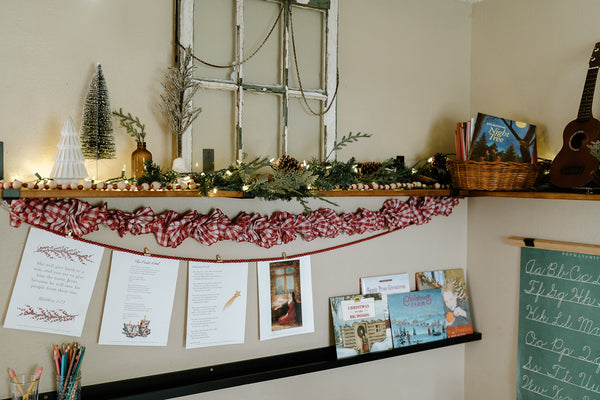
I like to print our pictures out and place them on an easel on our homeschool table or hang them on our chalkboard. This gives the children the opportunity to form a connection to the art piece in their own time and in their own way.
Play an observation game.
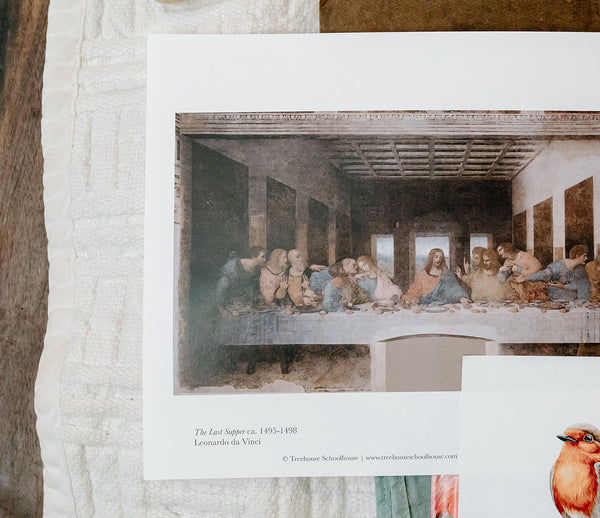
In our home education, I call this game “Hide & Describe”: Have the child study the art for three to five minutes, encouraging them to pay attention to the details. Tell them to take a picture of it in their mind. Turn the picture over and ask them to describe it. See how many details they can remember.
Prompt conversation through discussion questions.
Ask your child a few observation questions about the artwork. Try to keep the questions open-ended and remind your child that there are no wrong answers. For example, you could ask:
- Does this picture remind you of anything you have read or seen before?
- What is your favorite part and why?
- How does this picture make you feel?
- What emotions do the colors make you feel?
Do an artist study.
Look up the artist in a book or online and read a biography of their life. Locate their birthdate on a timeline and where they are from on a map. Look up other pieces of art from the same artist and compare.
Replicate the art.
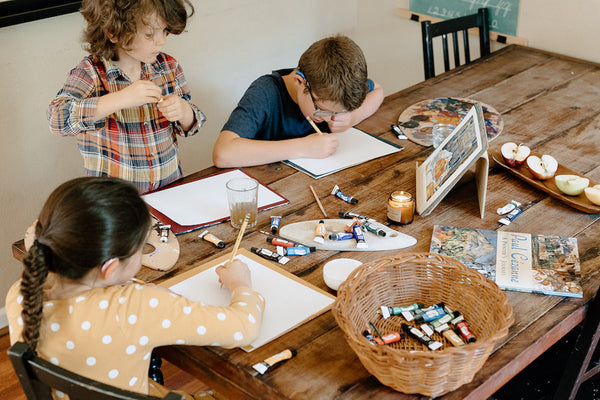
Invite your child to replicate a portion or all of the picture using pencil, watercolors, or colored pencils. They could write the title and the artist on their artwork.
Picture study is a pillar of Treehouse Schoolhouse curriculum.
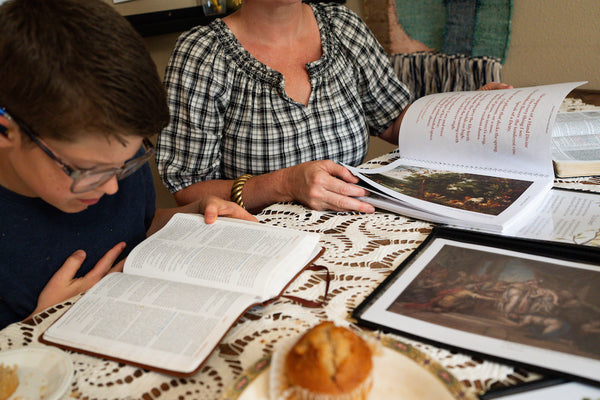
In Treehouse Schoolhouse curriculum, you will often find beautiful art pieces intertwined into different subjects and specific ways to engage and respond to the art and artists. A Connected Christmas features a painting of Mary, baby Jesus, and John the Baptist by Antonio da Correggio from the 1500s. An Expectant Easter includes classic religious artwork by the great masters Leonardo da Vinci and El Greco. Treehouse Nature Study: Autumn features a nature-themed art piece every week, like Dish of Apples by Claude Monet and Starry Night by Vincent VanGogh. As we study birds, flowers, and bees in Treehouse Nature Study: Spring, we look at Spring Bouquet from impressionist Pierre-Auguste Renoir and Farm Garden with Sunflowers by Austrian symbolist painter Gustav Klimt. Adding fine art alongside various subjects over the years has become an organic way to add depth to our lessons and experience art in a meaningful way.
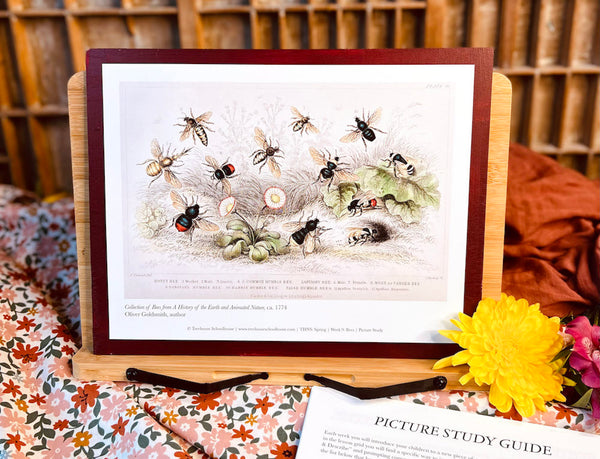
Related: Six Core Values of Treehouse Nature Study and Poetry in Your Homeschool: Why and How?
How are we including picture study in our homeschool this year?

This year, my family is starting our mornings with Rooted Family Bible Curriculum. Rooted is an 18-week family Bible curriculum that invites family members of different ages to join together for daily declarations, Scripture reading, heartfelt discussion, and prayer prompts, along with opportunities to explore beauty subjects, creative expression, and notebooking.
Related: Introducing Rooted Family Bible Curriculum and Notebooking in Your Homeschool: Why and How?
As we get into each week’s declaration and read Bible passages together as a family, we study fine art as a way to enhance and add a pictorial element to the Bible story.

In week 5 of Rooted, we study our identity in as a friend of God. As we look at Old and New Testament scriptures about trusting and obeying God, we study Jesus Washing Peter’s Feet by British painter Ford Madox Brown. I love how including classical art with Bible study can help bring stories and passages to life, and can add to our family discussion as we read the scripture together.
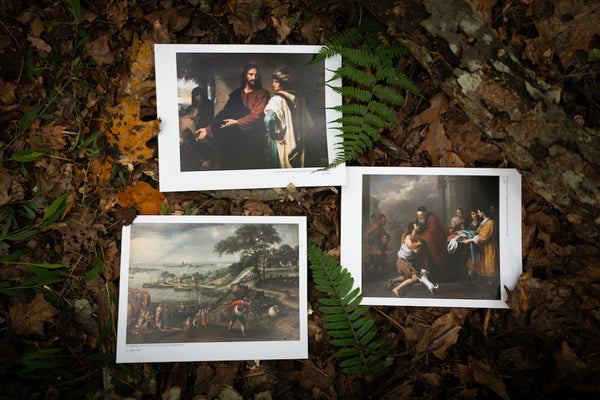
I also love considering how art allows us to see new perspectives. It is amazing to think that across different times in history, artists have pondered the same Bible characters and truths and poured their hearts into depicting these scenes and characters we read about in the Bible. As I think about how I want my children to relate to the Bible as they grow, I hope that bringing picture study to the table will give them a lens to take these scriptures to heart and draw from them as they mature. I hope that they, too, will learn to express their perspectives and emotions through forms of art as they interact with the Word of God.
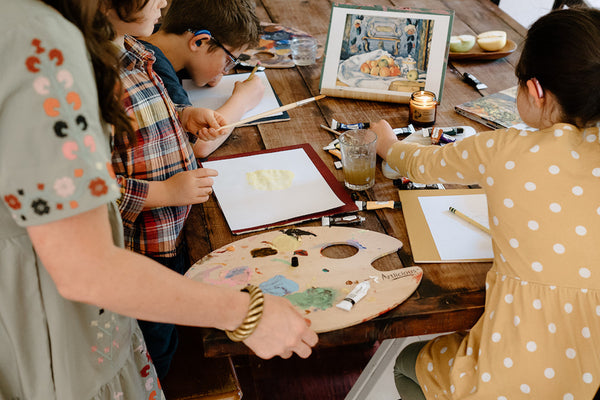
We will also continue picture study in other subjects. This fall, we are re-visiting Treehouse Nature Study: Autumn. It is such a joy to revisit the same paintings that we have studied from years’ past. It feels like visiting an old friend. Even my young preschoolers love looking at the art pieces and discuss what they observe and feel as they look at it. The older children really enjoy watching short documentaries of the artists and learning more about their lives through books and research online. We all enjoy lighting a candle, playing some classical music, and attempting to replicate the art.
Picture study: Not just for homeschooling
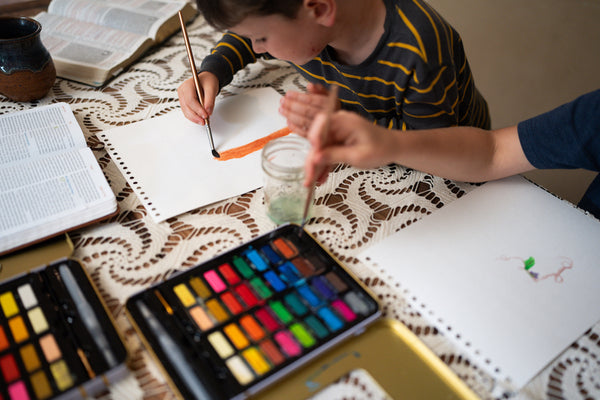
You can incorporate picture study or fine art into your home life with your children whether or not you choose to homeschool. Just like you read books to your children and practice other subjects outside of the classroom, you can display art throughout your home and mix it up from time to time, and ask your children about their favorites or what they see in the paintings.
The curriculum I have written is an excellent jumping-off point for families who want to expose their children to art or connect their children to fine art in a gentle way. All of our curriculum sources a variety of classic art pieces from different artists, styles, and time periods. Our curriculums serve as a menu to explore different subjects and can be used as in-depth study or just-for-fun activities to interact and spend time together as a family.
Picture study will always be incorporated into the curriculum I write and our own family’s homeschooling. I hope this post has inspired and encouraged you to incorporate it in yours too! Drop any questions you may have in the comments below.



